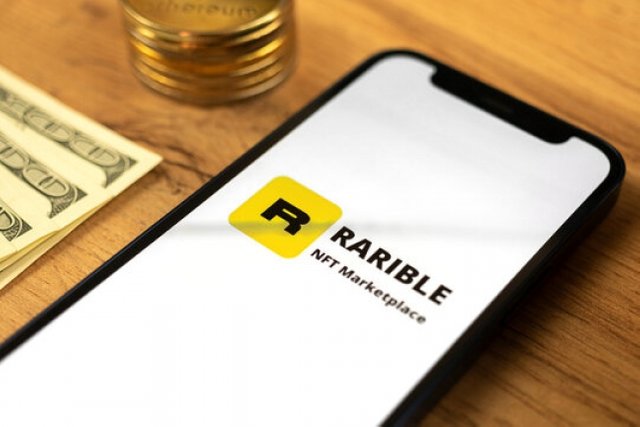
The world of blockchain technology has witnessed a monumental shift with the emergence of Non-Fungible Tokens . NFTs have revolutionized the way we perceive ownership, enabling digital assets like art, collectibles, music, and more to be tokenized and traded on blockchain platforms. Rarible, one of the pioneers in this space, has created a decentralized NFT marketplace that empowers creators and collectors. In this comprehensive guide, we will explore the step-by-step development process of building a Rarible Clone, enabling you to create your own NFT marketplace.
Understanding the Rarible Model
Before delving into the development process, it's crucial to understand the core features and functionalities that define Rarible's success. Rarible operates as a decentralized marketplace where users can mint, buy, sell, and trade NFTs. Some key features include:
Minting: Artists and creators can tokenize their digital creations into NFTs using the platform.
Marketplace: Users can browse, search, and discover NFTs listed for sale, along with their corresponding metadata.
Bidding and Buying: Rarible allows users to place bids on NFTs through an auction system, or directly purchase them at a fixed price.
Governance: Rarible employs a decentralized autonomous organization (DAO) structure, enabling token holders to participate in platform governance decisions.
Development Process
Step 1: Project Planning and Design
Before writing a single line of code, establish a clear project plan. Define your target audience, core features, and design aesthetics. Create wireframes and mockups to visualize the user interface (UI) and user experience (UX) of your platform. Consider the technical stack you'll use for front-end, back-end, and blockchain integration.
Step 2: Smart Contract Development
Blockchain is at the heart of any NFT marketplace. You'll need to develop smart contracts that adhere to the ERC-721 or ERC-1155 standards, which govern NFT creation and management. Use languages like Solidity or Vyper to write these contracts. Include functionalities for minting, transferring, and managing NFT ownership. Consider incorporating features like royalties for creators.
Step 3: Front-End Development
The front-end is what users interact with, so it should be intuitive and visually appealing. Leverage web development technologies like HTML, CSS, and JavaScript frameworks (e.g., React, Vue.js) to build the user interface. Implement pages for browsing NFTs, viewing individual NFT details, placing bids, and managing user profiles.
Step 4: User Authentication and Profiles
Enable user registration and authentication mechanisms. Users should have unique profiles where they can list their NFTs, view their collections, and track their transactions. Implement security measures like two-factor authentication to safeguard user accounts.
Step 5: NFT Minting and Listing
Implement the minting process, allowing users to tokenize their digital creations into NFTs. Users should be able to upload metadata, such as title, description, and image. Define parameters for minting fees and royalties that artists receive when their NFTs are resold.
Step 6: NFT Marketplace Functionality
Create the marketplace where users can search, filter, and discover NFTs. Implement bidding mechanisms for auctions and fixed-price listings. Include features for users to place bids, track ongoing auctions, and make direct purchases.
Step 7: Wallet Integration
Integrate cryptocurrency wallets like MetaMask to allow users to connect their wallets to your platform. This enables secure transactions and interactions with smart contracts. Users should be able to view their NFT holdings and manage their wallet balances.
Step 8: Payment and Escrow
Implement a secure payment system where buyers can make payments in cryptocurrency. To ensure a secure transaction process, consider using an escrow mechanism that holds funds until the conditions of the sale are met.
Step 9: Testing and Quality Assurance
Thoroughly test your platform for bugs, vulnerabilities, and usability issues. Perform unit testing for smart contracts and conduct end-to-end testing of user flows. Consider working with external testers to gain valuable feedback.
Step 10: Deployment and Launch
Once testing is complete, deploy your smart contracts on the chosen blockchain network (Ethereum, Binance Smart Chain, etc.). Deploy your front-end on a web server. Monitor the platform closely after launch to address any unforeseen issues.
Step 11: Community and Governance
Create mechanisms for user engagement and participation. Consider integrating a DAO structure, similar to Rarible, where token holders can propose and vote on platform upgrades, changes, and new features.
Step 12: Scaling and Future Enhancements
As your platform gains traction, scale your infrastructure to accommodate increasing user activity. Continuously gather user feedback and make iterative improvements to enhance the platform's features and user experience.
Conclusion
Building a Rarible clone requires a comprehensive understanding of blockchain technology, smart contract development, and web development. By following the step-by-step process outlined in this guide, you can create a decentralized NFT marketplace that empowers creators and collectors in the exciting world of NFTs. Remember that the journey doesn't end with the launch; continuous improvement, user engagement, and adaptation are key to the long-term success of your platform.